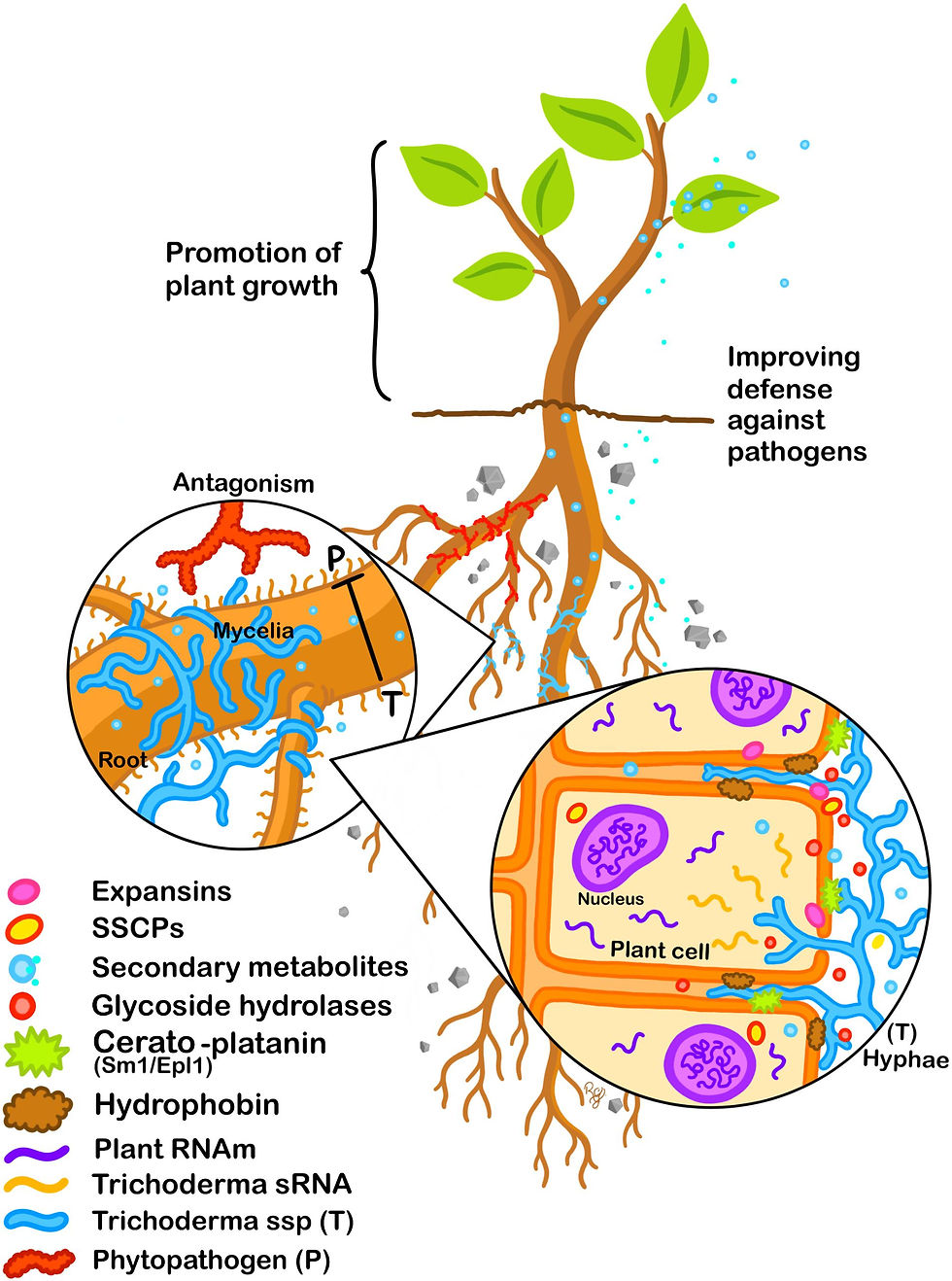5 Key Benefits of Pseudomonas Fluorescens for Crop Health
- Stanislav M.

- Aug 28
- 2 min read
Updated: Sep 8
Pseudomonas fluorescens is a versatile plant-growth-promoting rhizobacterium (PGPR) that suppresses pathogens, produces antibiotics and siderophores, and boosts nutrient uptake. Learn how these mechanisms translate into healthier plants and higher yields.
Disease suppression via DAPG and phenazine antibiotics
P. fluorescens secretes 2,4-diacetylphloroglucinol (DAPG) and phenazine compounds that directly inhibit fungal and bacterial pathogens in the rhizosphere, reducing disease incidence and protecting root and crown tissues.
Enhanced iron uptake through siderophore production
By releasing high-affinity siderophores, P. fluorescens chelates Fe³⁺ from soil minerals and delivers it to plant roots. This improves iron nutrition, supports chlorophyll synthesis, and prevents iron-limitation symptoms.
Improved root architecture and nutrient absorption
Through indole-3-acetic acid (IAA) production and ACC deaminase activity, P. fluorescens stimulates root branching, root hair density, and overall root biomass. A more extensive root system enhances water and macronutrient uptake (P, K, N).

Microcosm system for the study of rhizoplane colonization. (A) Diagram of the microcosm system; (i) plants are grown on a water agar slope. (ii) A bacterial suspension is introduced to a level no higher than the hypocotyl. The system allows bacterial movement along the root and quantification of the colonization process; (iii) total colonization (yc) was the result of both attachment to and proliferation on the root surface. (iv) Proliferation on the root surface (yp) was quantified in the absence of attachment. (B) Microcosm chamber containing a growing lettuce seedling. (C) A confocal image of Pseudomonas fluorescens SBW25 E1433 (shown in green) superimposed over a brightfield image of a lettuce root. (source) Induced systemic resistance against soil-borne pathogens
Colonization by P. fluorescens primes plant immune pathways (jasmonic acid and ethylene signaling), triggering induced systemic resistance (ISR).
ISR bolsters above-ground defenses, reducing vascular wilt, damping-off, and nematode damage.
Safe, organic-compatible biocontrol alternative P. fluorescens formulations are compatible with organic farming standards and leave no harmful residues. They promote long-term soil health, avoid pesticide resistance, and integrate smoothly with other beneficial microbes.
For detailed mode of action and application guidelines, visit our Pseudomonas fluorescens product page .



Comments